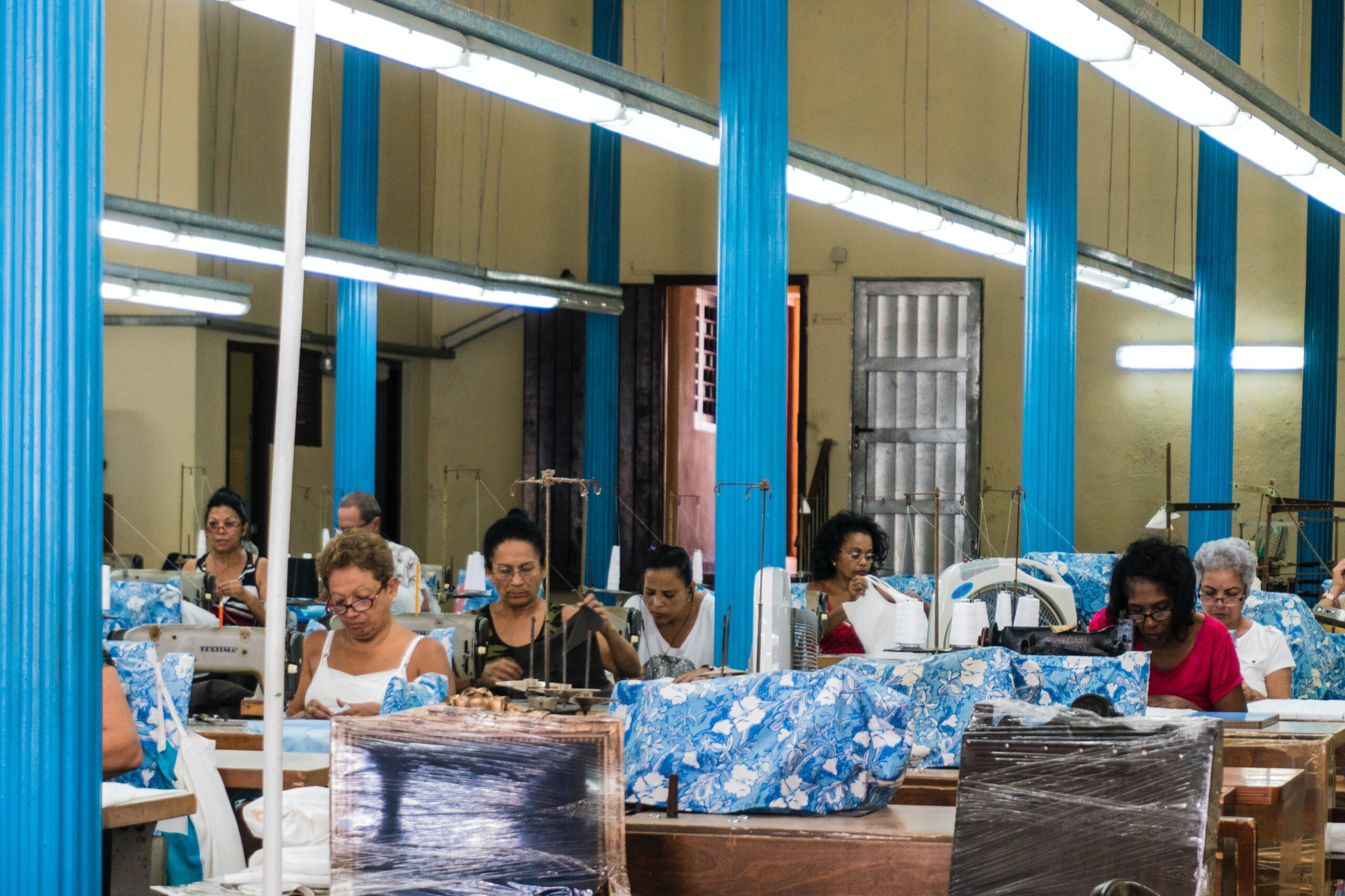
‘Tis the season for stuff. After the Christmas rush and in the midst of New Year’s resolutions, many of us consider — and reconsider — our relationship with things. We’ve all heard about whether an item sparks joy and editing our homes, but it’s smart to start with purchasing habits … particularly when you realize how human trafficking and conscious consumerism are connected.
Human trafficking is a global issue. It affects more than 50 million women, men and children worldwide, with profits of more than $150 billion a year. Traffickers target groups that have been economically and socially marginalized, such as women, children, LGBTQ+ youth and BIPOC and those who are undocumented, using force, fraud or coercion to obtain commercial sex or forced labor. They look for vulnerabilities, whether due to lack of family or community support, financial instability or lack of access to financial resources or being a victim of violence or homelessness.
The link between human trafficking and conscious consumerism
How are human trafficking and conscious consumerism connected? Many of the products we consume every day are made by adults and child laborers trafficked in hazardous working conditions. Roughly $39 billion a year is generated from child labor, and of the more than 150 million children working worldwide, close to 75 million are working in hazardous conditions. Nearly 3 million are subjected to forced labor and labor trafficking. 1,2
These are mind-boggling numbers, and solutions can seem overwhelming. But as consumers, we can make a conscious effort to take a stand against exploitative labor practices by asking the simple question: How was it made?
Solutions toward a brighter future
Conscious consumerism is a rapidly growing movement “in which consumers make informed decisions about their purchases to bring about positive change in society, the economy, and the environment,” according to CauseArtist, a platform that examines sustainable and regenerative business practices.3 “It involves mindful and ethical consumption that takes into account not only the products and services being bought, but also the companies behind them. This type of consumerism encourages individuals to prioritize sustainability, human rights, and social responsibility when they shop.”
Your individual choices do make a difference. Collectively, these shopping practices have allowed the growth of sustainable and ethical business practices to flourish.4 When you realize how human trafficking and conscious consumerism are connected, it’s a meaningful way to participate in the fight to end human trafficking. But it’s sometimes hard to know which brands and companies to choose.
The Fair Trade label helps make buying choices easier. “Fairtrade changes the way trade works through better prices, decent working conditions and a fairer deal for farmers and workers in developing countries,” according to Fairtrade International.5 Through a rigorous vetting process, Fair Trade USA ensures that suppliers for companies such as Patagonia are treating factory, farm and fishery workers ethically. Examples of the impact of Fair Trade Certification are plentiful and gratifying.6
Buying from certified B Corp businesses is another way to feel confident that your purchases are made by workers who are treated fairly. “Certified B Corporations use business as a force for good,” according to B Lab. “They focus their impact on stakeholders, like their neighbors, their employees, and our planet.” The steps to getting certified are many and challenging; the label allows consumers to make choices that support healthy, safe and fair conditions for workers.7
The fight against human trafficking and conscious consumerism go hand in hand. As we collectively grow demand for products made with human rights in mind, the profitability of modern slavery is challenged. There’s greater hope for a future in which ethical consumption prevails in the fight against human trafficking.
Steps You Can Take
You can make a difference!
- Learn more about how your favorite products are produced.
- Explore the information we’ve included in our footnotes here, as well as at https://thefreedomcafe.org/conscious-consumer.
- Choose products that are certified Fair Trade or made by a B Corp. The Fair Trade Federation and B Corporation are great places to start.
- Raise awareness about the ways human trafficking and conscious consumerism are connected and advocate for informed choices.
1 https://www.unicefusa.org/what-unicef-does/childrens-protection/end-child-trafficking
2 https://www.unicefusa.org/sites/default/files/UUSA%20Conscious%20Consumerism%20and%20You.pdf
3 https://causeartist.com/what-is-conscious-consumerism/
4 https://nbs.net/what-conscious-consumerism-really-means/
5 https://www.fairtrade.net/about/what-is-fairtrade
6 https://www.forbes.com/sites/amyschoenberger/2018/12/14/what-exactly-is-fair-trade-and-why-should-we-care/?sh=60c4e2ed7894
7 https://usca.bcorporation.net/about-b-corps/
By Julianne Will and Josephine Crisostomo
January 8, 2024
